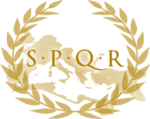Twelve Tables

The Twelve Tables were the first version of the laws of the Romans. These twelve tables were made of brass and held up the stand in the Speaker's Forum in Rome, much as milk crates hold up the pedestals at Speaker's Corner in Hyde Park.
Prior to the Twelve Tables, the law was whatever the last Roman King, Tarquinius Superbus (Tarquin the Superb) said it was. (I know it when I see it, the Swell One used to say.) A Cabal called the decemvirs (or "Nine Old Men") wrote the Twelve Tables in the year 451, and then again later, in 450, so that the common citizen in Rome could know exactly which of his civil rights the government had trampled.
The Twelve Tables were the basis of Roman law for many centuries of disappearances, poisonings, treachery, and conspiracy. Much of their contents has been lost to humankind. Despite not knowing what was in them, we are certain that they have informed much of the modern law that "protects" us today.
Twelve Tables in the hard sciences[edit]
The Twelve Tables is also a problem in topology closely related to the Seven Bridges of Königsberg. The problem concerns a drunken orgy with revelers dancing on the tops of tables, and challenges the problem-solver to devise an algorithm to dance on the top of each of twelve tables, without repetition nor touching the floor. Like the Königsberg thing, the solution, proven for full credit in a variety of doctoral dissertations, is to either point at the ceiling or tell the proctor his shoe is untied, and use the momentary distraction to tiptoe across the room. Frodo Baggins solved the Twelve Tables at Bree, but his solution, involving the use of a Ring of Power, is not considered canonical.
Twelve other tables[edit]
These days, twelve tables can be purchased at Ikea almost as cheaply as one, per table.
